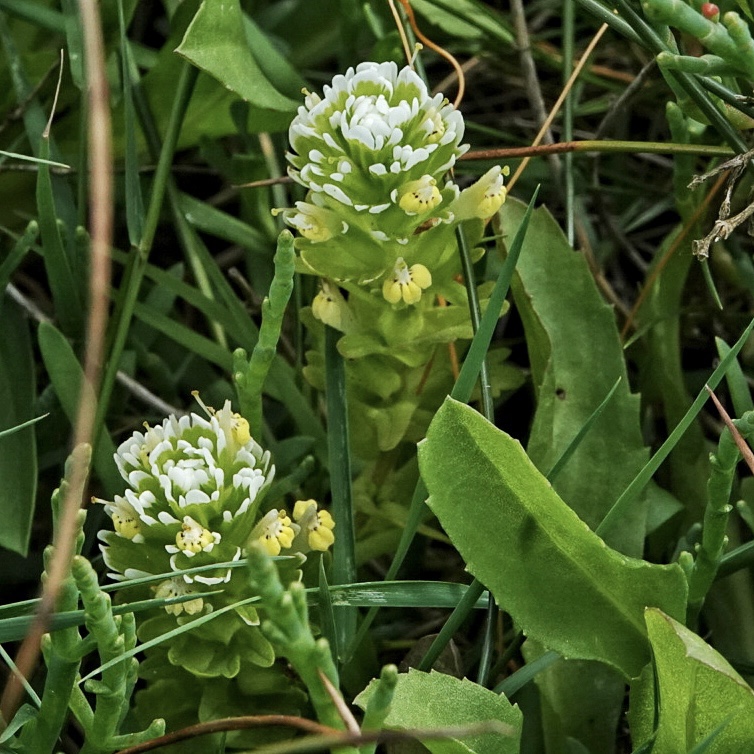
This was the native plant of the trip to Long Beach Peninsula last weekend, a plant that not only had I never seen, but that I didn’t know existed (although there are still many plants that fit into both those categories)! This wonderful plant was, until recently, a member of the family Scrophulariaceae, but various molecular studies (including Bennett/Mathews, 2006) have shown that the hemiparasitic species (which refers to the plant’s ability to generate energy from photosynthesis, as well as drawing from the organism which they parasitize) that were in Scrophulariaceae, are more properly placed in the family Orobanchaceae (broomrapes).
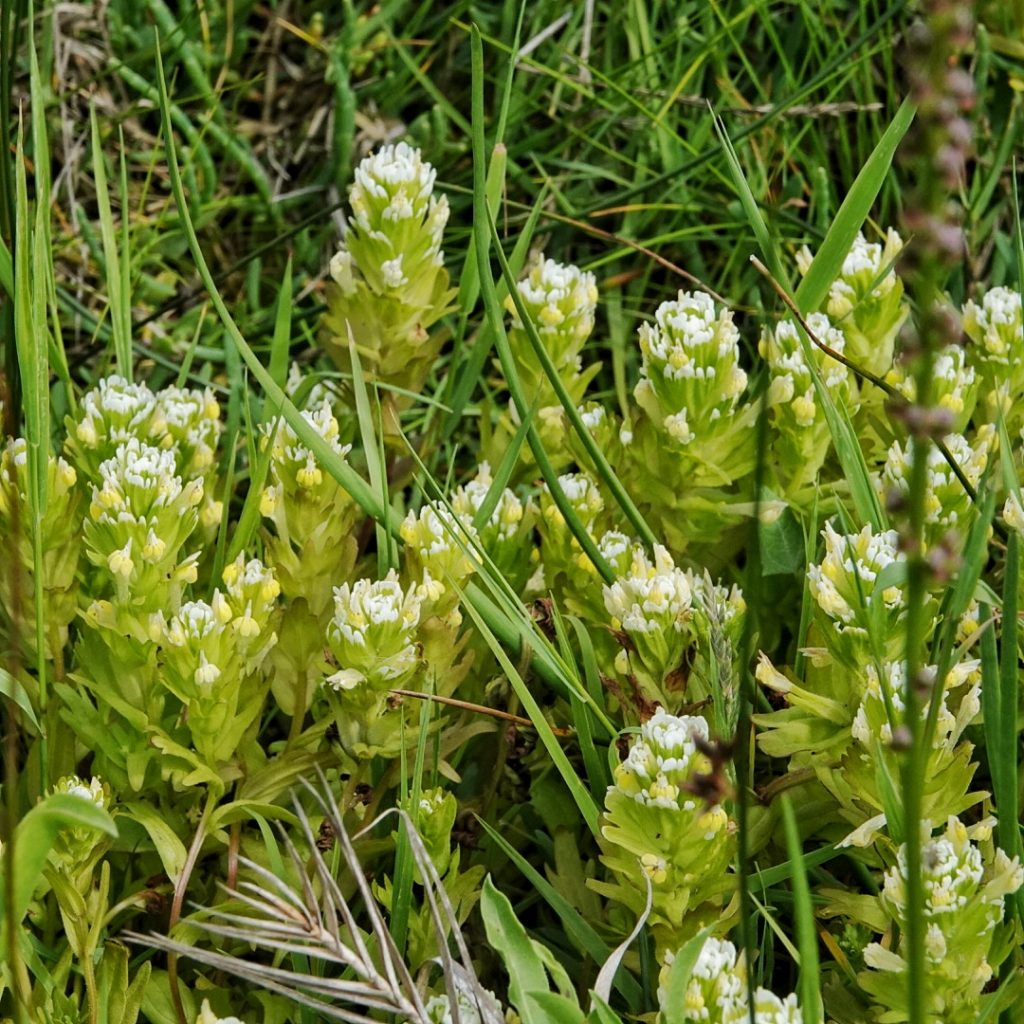
One of my great joys about doing these profiles is learning new things, due to actually researching each species, rather than simply settling for identification. In this case not only had I not heard that many scrophs (including Parentucelia and Pedicularis) had been moved to Orobanchaceae, but I had not previously known that the paintbrushes (Castilleja) were parasitic! They produce haustoria, which are thin projections from the roots which penetrate the roots of the host plant to draw nutrition from it.
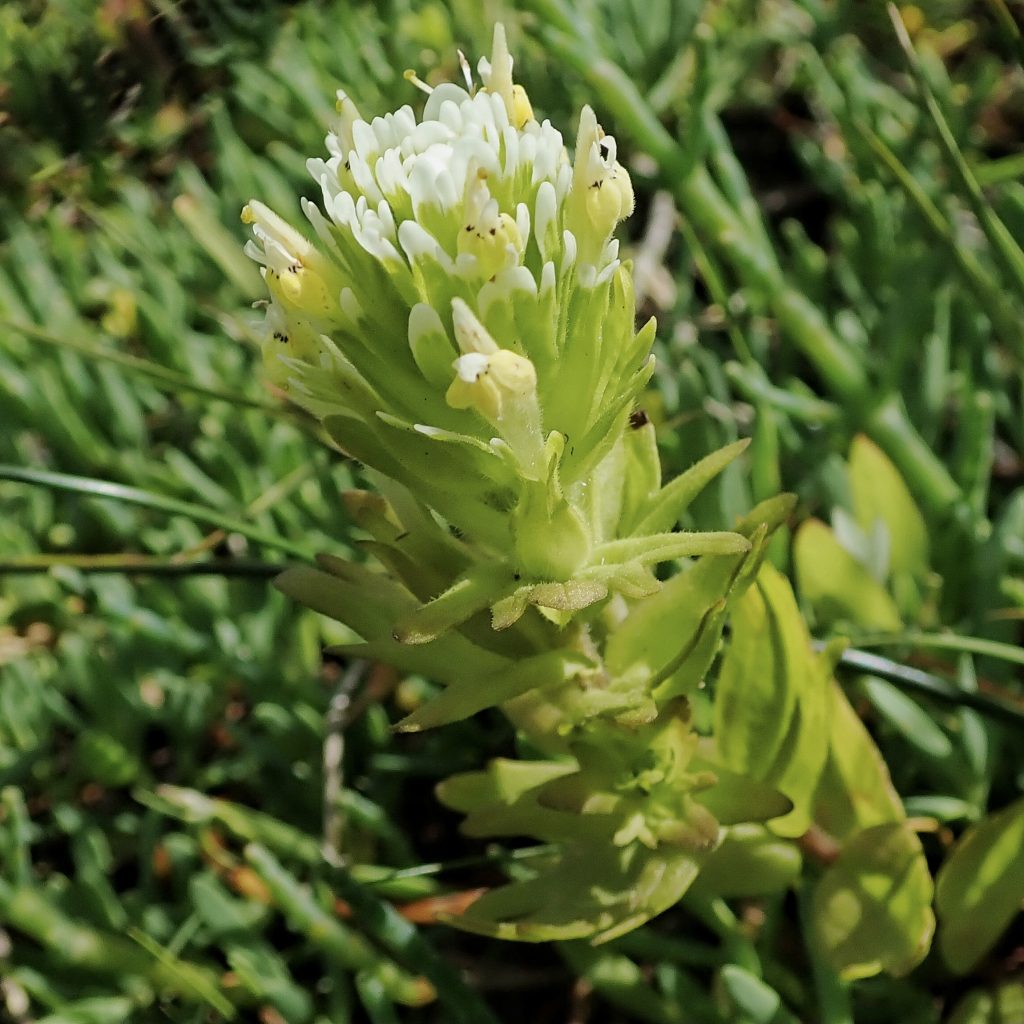
Castilleja in general don’t seem to be picky about what they parasitize, and for Castilleja ambigua grasses of many types are frequent targets. As hemiparasites they are capable of surviving without a host, but they only thrive with one. There is an interesting article about parasitism in paintbrushes here, where they talk about the fact that this form of parasitism may actually increase species diversity by retarding the ability of the dominant species to out compete secondary species.
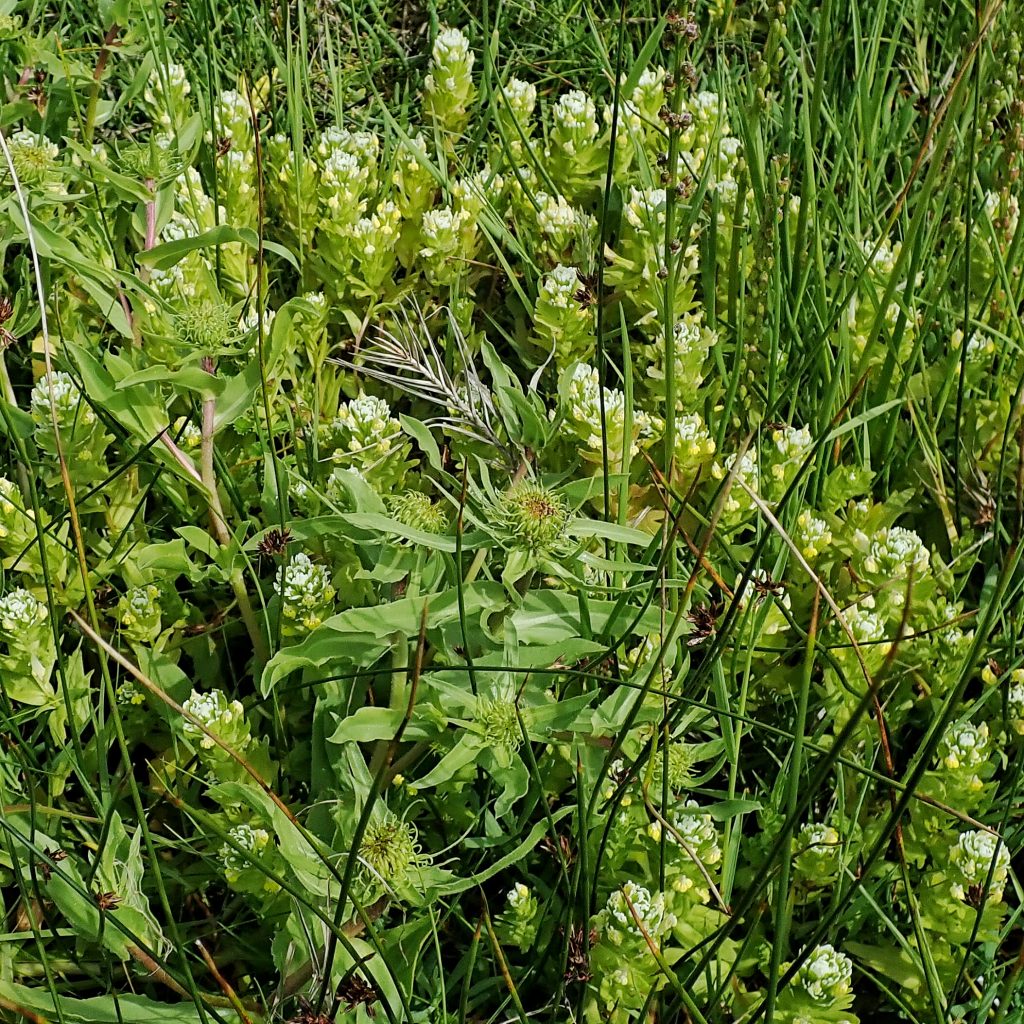
Castilleja ambigua as a whole is a west coast endemic. There are other subspecies, but ours is C. a. ambigua, and it is the most prevalent. The others are limited to small areas in California, except for C. a. humboldtiensis, which is rare, endangered, and just sneaks in to sw Oregon. There are many common names for this plant including salt marsh owl-clover, paintbrush owl-clover, and johnny-nip.
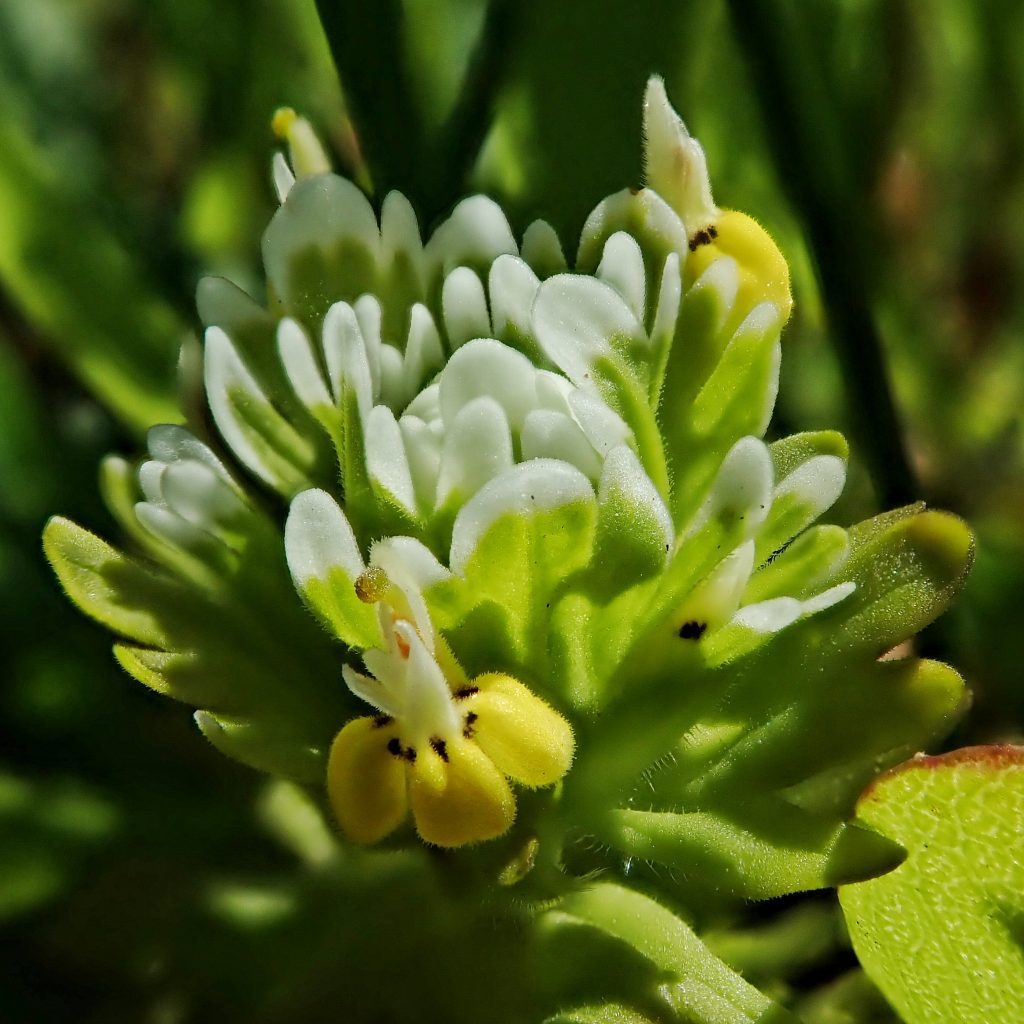
Description-Annual; short (usually less than 12” tall), erect plant; leaves are all on the stem, ovate to lanceolate, pointed below and blunt above; as with most Castilleja the flower itself is quite small, yellow, often with red or purple tip, and the lower lip is 3-5mm wide; flower is dwarfed by white to yellow or pink tipped, petal like, gradually spreading bracts.
Similar species–C. attenuata has bracts that are very narrowly bicolored, narrow pointed leaves, the lower lip of the flower is only 1-2mm wide, and it grows more inland; other annual Castilleja have uniformly green bracts.
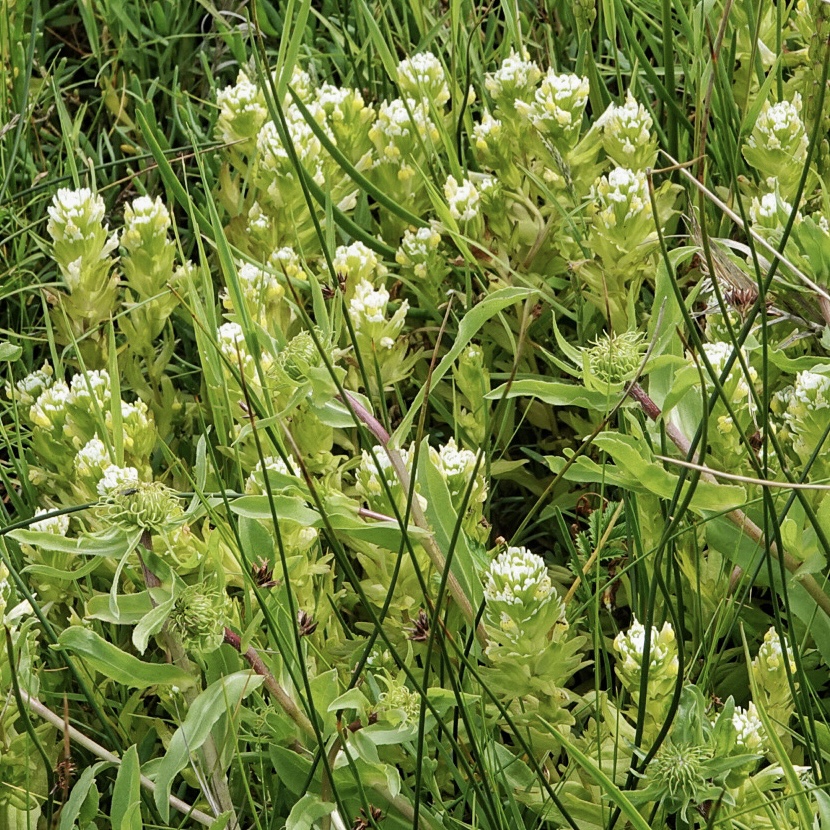
Habitat-Borders of bays, salt marshes, and brackish ponds.
Range-West Coast endemic; along the whole coastline in our region.
Reproductive timing-Blooms June to September
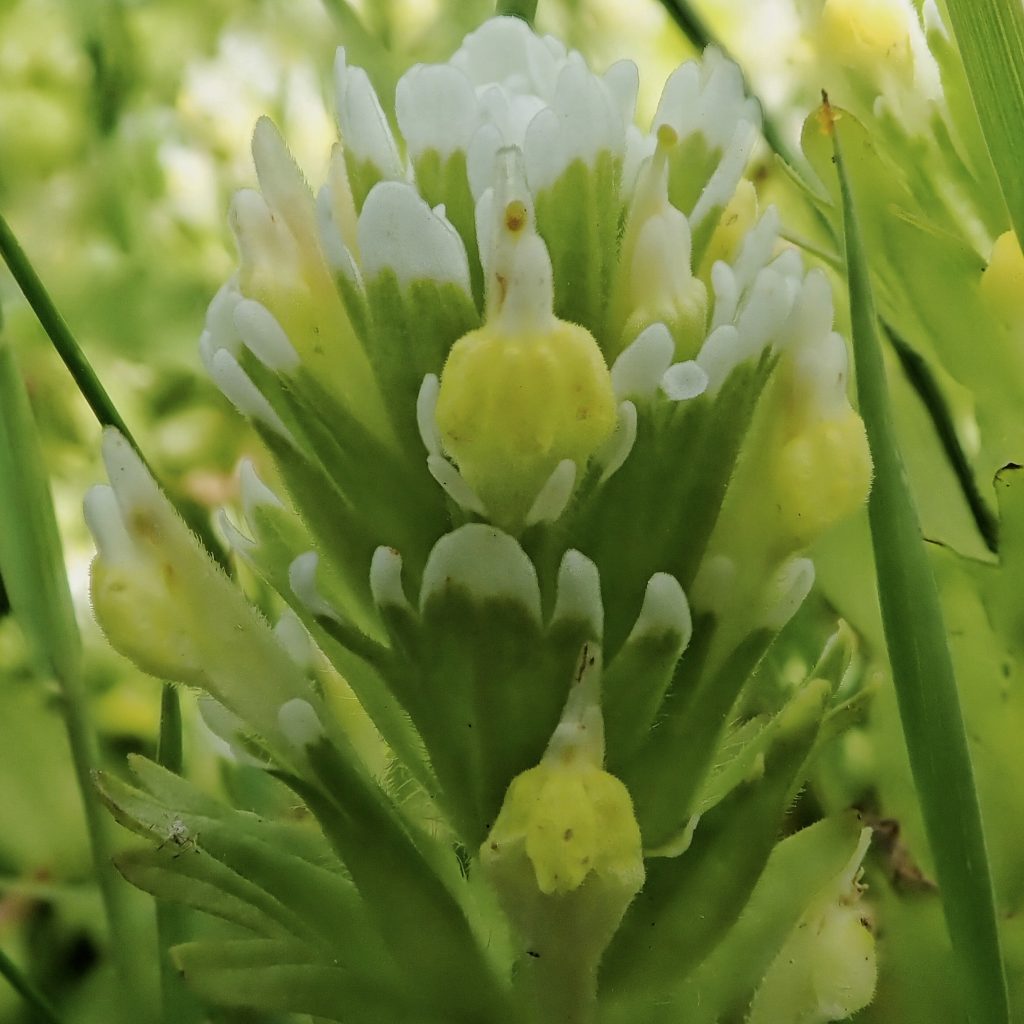
Eaten by-It is possible that some of the many species of Lepidoptera that utilize Castilleja spp. as a larval host may use this species, but it’s location along the immediate coast would preclude most of them.
Etymology of names–Castilleja honors Domingo Castillejo (1744-1786), a Spanish botanist. The specific epithet ambigua is from the Latin for ambiguous. Hooker and Arnott (1833) don’t mention exactly what they found ambiguous, but did state that the form of the flower seemed unusual for a Castilleja.
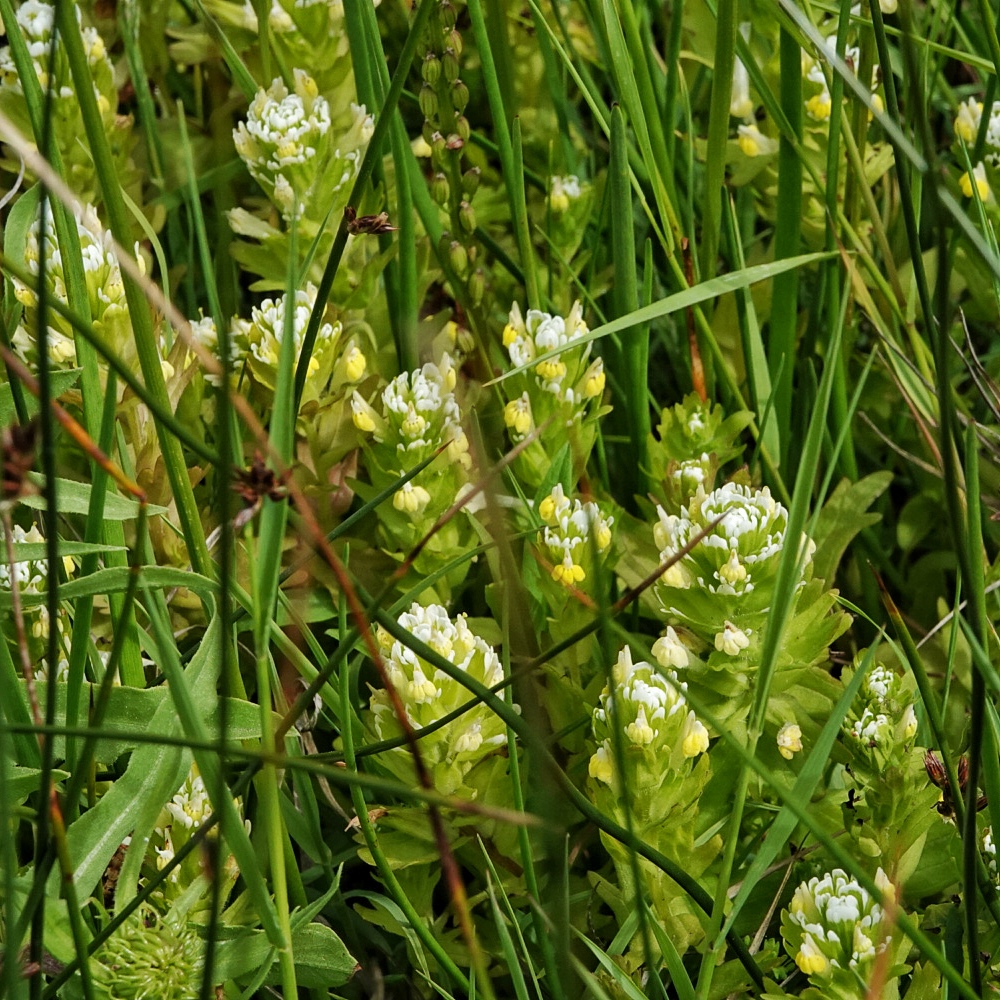
Castilleja ambigua</em> ssp. <em>ambigua | Johnny Nip | Wildflowers of the Pacific Northwest
https://bsapubs.onlinelibrary.wiley.com/doi/pdfdirect/10.3732/ajb.93.7.1039
https://depts.washington.edu/phylo/OlmsteadPubs/Tank_et_al_2009.pdf
https://courses.washington.edu/esrm412/protocols/2018/CAAM32.pdf
https://oleaeuropea.wordpress.com/2011/07/27/indian-paintbrush-a-pretty-parasite/amp/
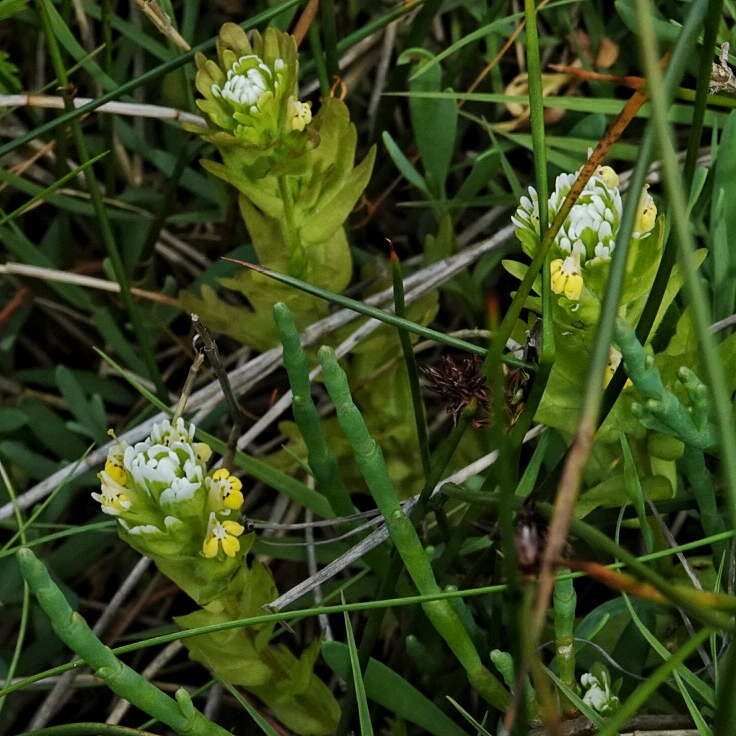
Fascinating… am curious as to the extent of the patches you found — large areas of growth or relatively isolated? Am musing that we would expect these patches to “thrive” in what general conditions? Beautiful pics of the blooms, btw.
All of the ones I found were in a hundred sq ft area, and the biggest clump was maybe 2’x2’. They were on the bay side of the little berm, lots of grass, not muddy. I’d be surprised if you didn’t have some along your bay front. And thanks!
This is a link from the post. It’s all the information I could find about propagation.
https://courses.washington.edu/esrm412/protocols/2018/CAAM32.pdf
Thanks for the link. I’d never heard of a “hemi parasitic” species before, so this is especially intriguing. Plus, the inflorescence is stunningly beautiful. Thanks for the introduction.
Hope you find it on your place!